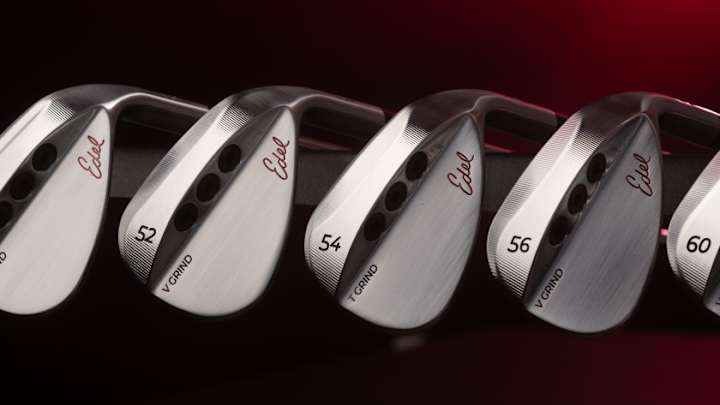Edel Dials in Wedges With SMS

David Edel has never been afraid to venture off golf equipment’s beaten path. He’s the innovator who created Bryson DeChambeau’s first set of single-length irons. He developed and still refines the most comprehensive putter fitting system in the industry.
And now, Edel has taken custom wedge fitting to a level not seen in the consumer space with the company’s Swing Match System (SMS). The wedges have three weight ports with interchangeable weights that can be adjusted not only to a player’s swing but to his or her physical attributes.
Getting the weight in the right place can lead to a 44 percent improvement in distance, spin rate and accuracy, according to Edel’s in-house testing.
The wedges were conceived when Edel was working on an attempt to raise the center of gravity (CG) in a wedge in order to bring down the trajectory. He drilled three holes in the back of a prototype and stuck rolled up lead tape in each of the holes and measured the results. Edel’s son was the first guinea pig and when the weight was in the toe, he hit shanks. With the weight in the heel, the shots were pure. Edel knew he was onto something.
Edel subscribes to the biomechanics of the golf swing developed by Mike Adams, who is the No. 2-ranked teacher in the U.S. by Golf Digest. “I’ve always looked at how to apply the golf club to the human body, not how to apply the body to the club,” Edel said. “The main issue is: How do you combine the human element with the golf club?”
That includes the relationship between a player’s height to his or her wingspan, the length of the forearm and the upper arm, and what Adams call a player’s “fold patterns.” To find yours, take your golf stance and let your arms hang down with palms together. Move the arms back without moving the shoulders. If your right palm (if you’re a right-hander) faces skyward, you are an “under” golfer. If the palm is perpendicular to the ground, you are “side-on” and if the palm points toward the ground, you are a “cover” golfer. And some people will be in between two of the fold patterns.
All of which is to say that by and large, “under” golfers are shallow, “cover” golfers are steep and “side-on” golfers are in between. Edel says that “under” players like the heaviest weight in the toe and “cover” players like the weight in the heel. Only about 20 percent of players he has tested were most successful with the heaviest weight in the middle. Edel calls it “steering force.”
“Think of a steering wheel at the end of the shaft,” he said. “When you put (the heaviest weight) in the toe, it creates a lay-back angle and opens the face while the handle goes up. You put it in the heel, making the toe lighter, it covers more, which allows a player to swing more in-to-out.
“Generally speaking, a player with a stronger grip will tend to like the weight in the toe. And a player who is more on top with a more neutral grip will tend to like the weight in the heel.”
The SMS line has four grinds — ranging from shallow to steep, with differing bounce configurations.
“Bounce is a zeroing force,” Edel said. “We aren’t selling bounce, we’re selling the club coming into the ground flat. It’s not trail digging or leading edge digging. You need multiple grinds. There’s not a bounce police out there. How much a person needs is dependent on the angle of attack and shaft lean, which is the release motion, which is dictated by path.”
In addition, the SMS line has 16 shaft options in its fitting system. While it’s advantageous to visit an Edel fitter, it’s not absolutely mandatory. The company’s website will soon feature a wedge optimizer for consumers who can’t get to a fitter, a list of which can be found on the website.
